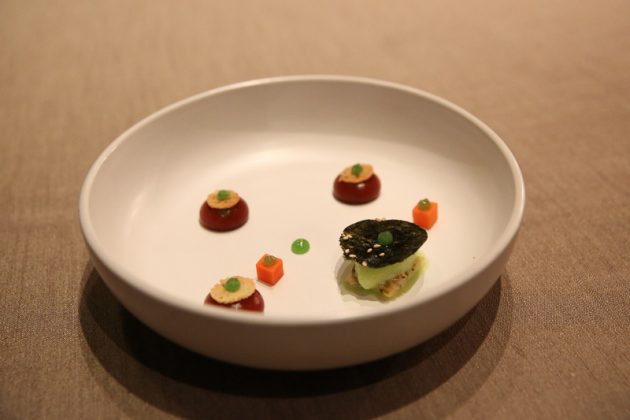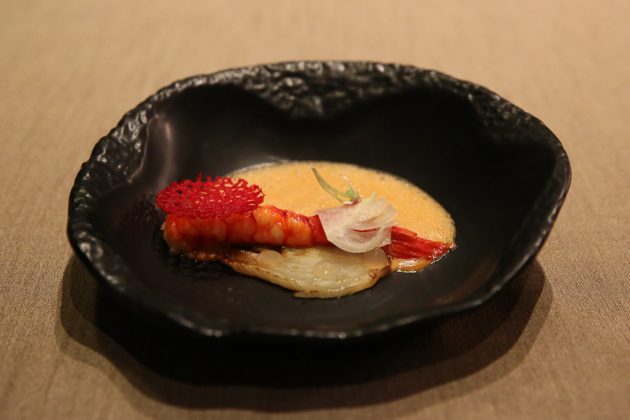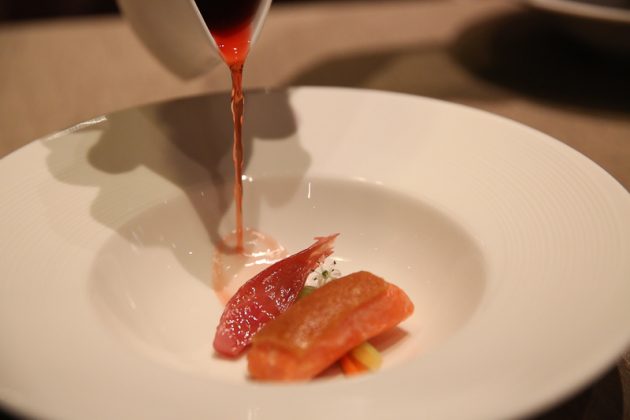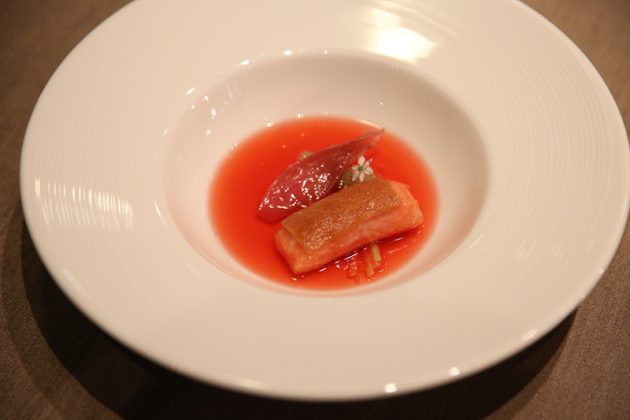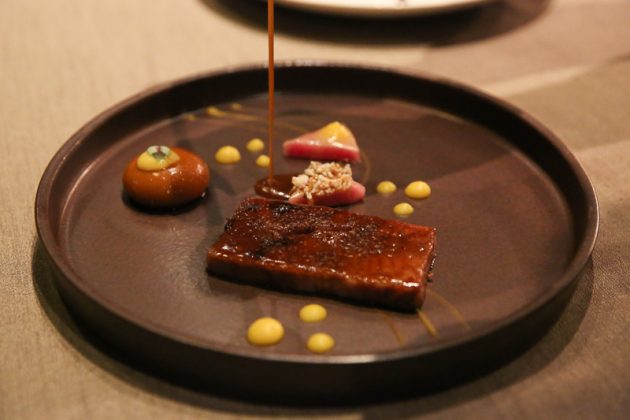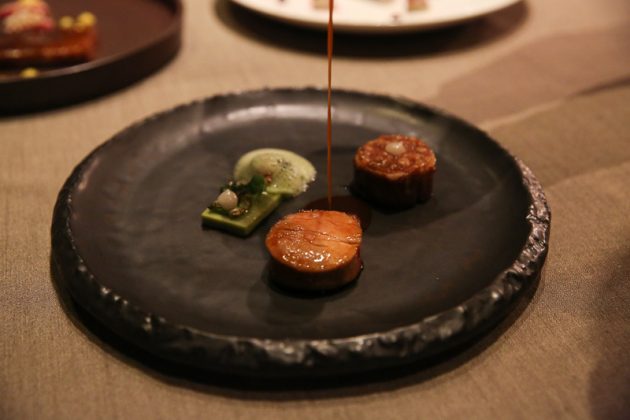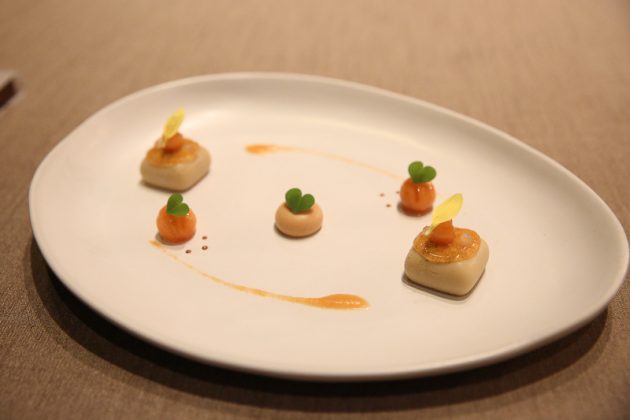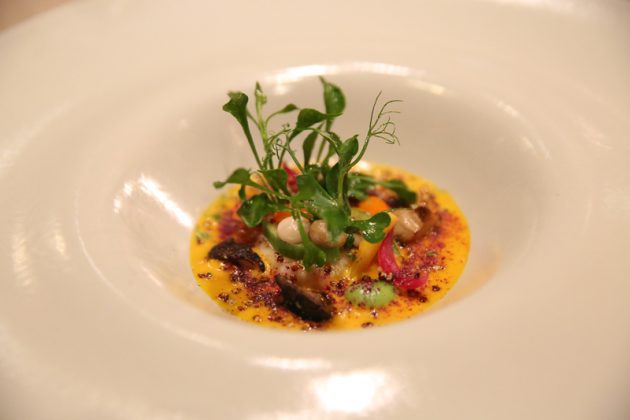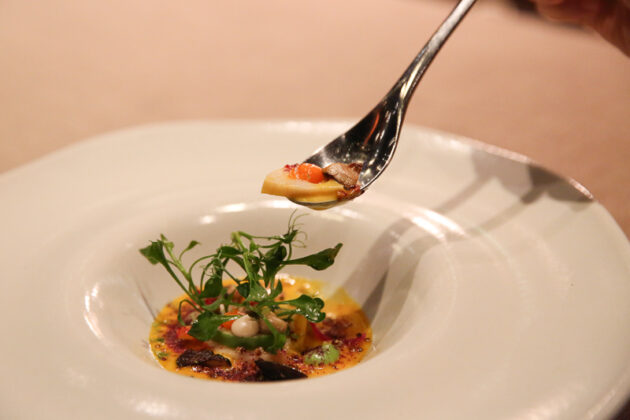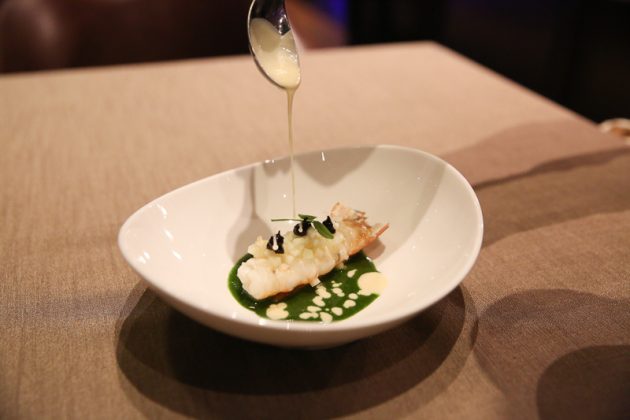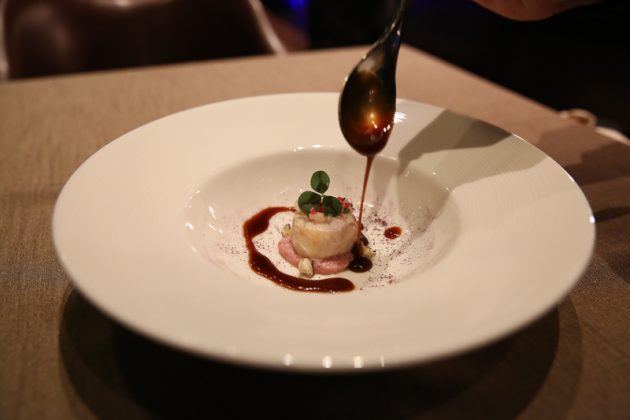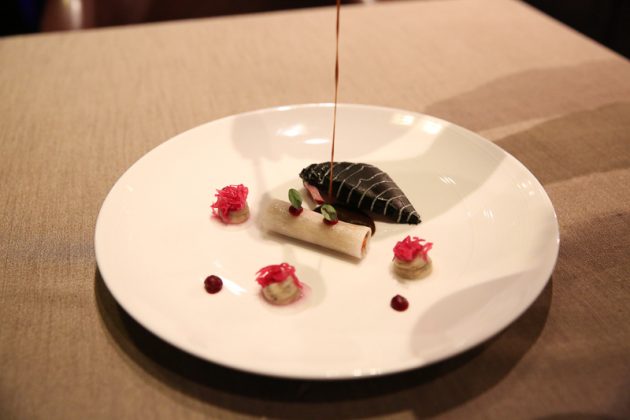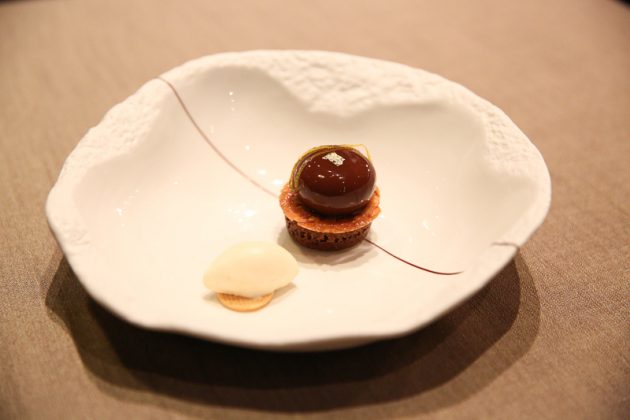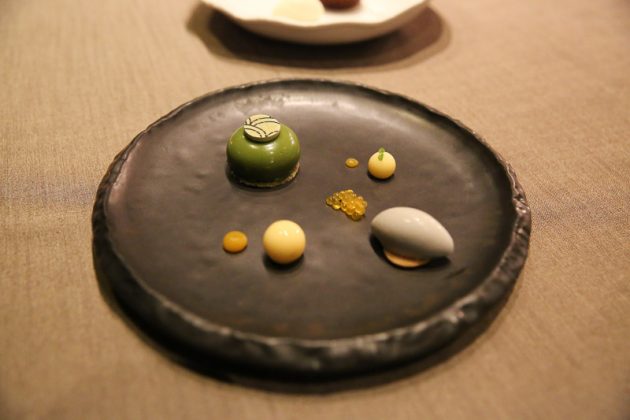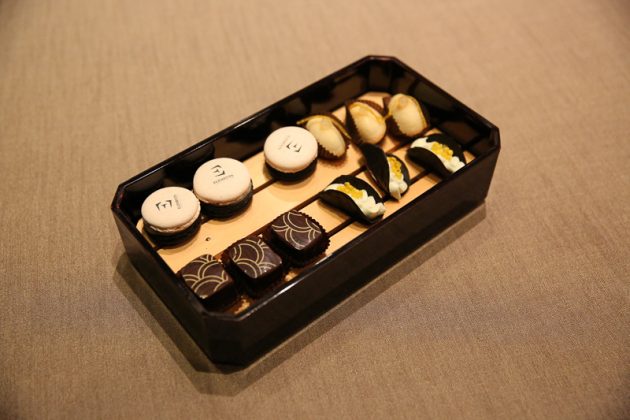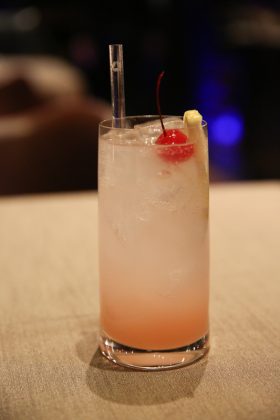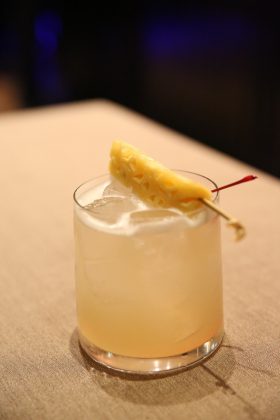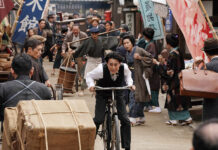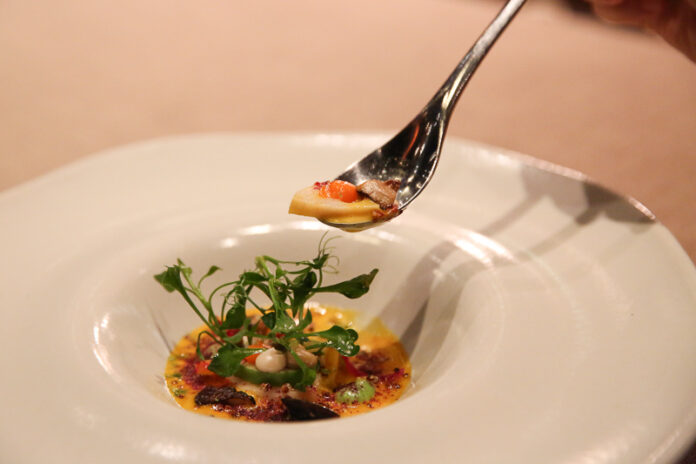
BANGKOK — Mixing miso with butter and making tiny globes of sauces from squeeze bottles is the name of the game at Elements, a Japanese-French restaurant that retained its one Michelin star rating for the third year in a row.
Elements, on the 25th floor of The Okura Prestige hotel, has been open since 2012 and in November retained its one-star rating which it won back in 2017.
Elements currently serves two set menus: the six-course Ta-ke (4,708 baht net price) and seven-course Matsu (5,297 baht net price). Even for the quality of food, these prices are still sky-high and will only ever be tasted by culinary inspectors and haute cuisine enthusiasts with thick pockets. Still, here are the dishes which earned Thailand of its 24 one-star restaurants.
Read: First Thai Restaurants by Thais, in Thailand, Receive Two Michelin Stars

Both courses begin with a flute of kombucha as a welcome drink, and amuse-bouches that introduce what French-Japanese is like: a mini-okonomiyaki bite, a rice cracker with wagyu, and a thin piece of shortbread cookie with tofu on top, for example.
What’s really to write home about is the famous smoked miso butter served with regular French butter, eaten with a choice of a French croissant, charcoal bun, or a soba buckwheat baguette. The miso butter blends umami East with buttery West, best tasted on the soba bread.
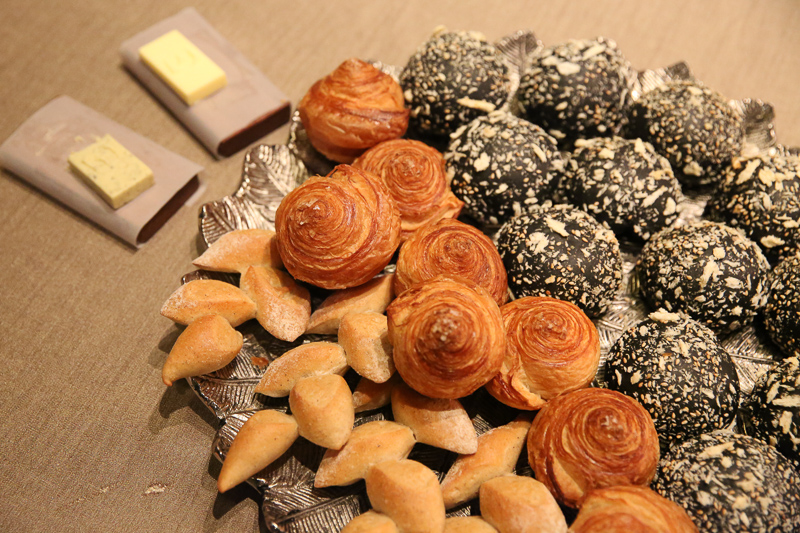
The first dish for both courses is the Kaviari Kristal Caviar, one of the stronger dishes of the entire restaurant: an oyster, topped with caviar, is wrapped in jellified cucumber placed on salsa which neutralizes any and all raw seafood smells. Slice the oyster into threes to eat with the cubes of radish with ponzu sauce, egg whites, and yuzu peel to completely harmonize tastes of the sea and garden.

Ta-ke then has three other starters: Thai Heirloom Tomatoes, which are a sorbet wasabi next to purees of Chiang Mai tomatoes (which taste like ketchup, unfortunately), Carabineros, a fresh Spanish prawn with fennel and a red curry-tasting foam, and the Ora King Salmon, a slice of the softest-ever salmon topped with a crumble made from dashi, in a clear beetroot and ginger stock. The last was most impressive, the first the least, and the second a commendable attempt to slip in Thai tastes into Japanese-French haute cuisine.
The main course is a choice between a pork dish and the Oyster Blade Japanese Wagyu (an extra 800 baht), which we chose the latter. The rectangle of wagyu enveloped in gravy might be one of the most tender pieces of meat we’ve ever eaten. If we needed extra gravy, we just had to poke open the sphere made from beetroot. Cutting through the meaty richness were radish triangles and dots of kumquat foam.
The starters in the Matsu courses were similarly divisive. The Foie Gras with yuzu, uni, and persimmon were impressive balances in umami and sweetness. Yasai, a medley of vegetables in various forms: vegetable consomme, pureed carrot, powdered red cabbage, gels of taro and eggplant, and pickled lotus root, and so on probably made the lives of these veggies to its highest possible state of being.
However, other than being expensive seafood, the Big Norway Langoustine and Sea Bass on purple potatoes were less memorable. Matsu’s main courses are a choice between the previously-stated wagyu dish, and the Glazed Pigeon, the dark meat thigh of which is covered in squid ink miso. The wagyu had much more of a wow factor, although never say never if you haven’t tried pigeon.
As for the desserts, the Ta-ke set gets a Miso Ice Cream, which is a coffee brownie topped with an almond florentine and a sphere of 70 percent dark chocolate from Papua New Guinea, served with a tiny bit of miso-flavored ice cream, which was literally a slightly-salty ice cream. The Matsu diners get the Genmaicha, a small spoonful of sesame ice cream with a confit of banana, passionfruit, and mango inside a matcha globe.
Both diners then share the Okashi, four petits fours: a Ferrero Rocher chocolate chunk, a yuzu-miso macaron, a bit of orange cake, and a squeegee of genmaicha, charcoal, and yuzu. The bites of desserts go well with any of the teas on offer, but are quite heavy for the meal’s end, especially when compared with the size of the savory courses.
Wine pairings are a painful 3,159 baht for the Ta-ke course and 3,744 baht for the Matsu one. Skip those, as well as the Kyushiki – 550 baht for a glass of Suntory whiskey with sugar and ginger. Although the Pineapple Sake Cooler (480 baht) might appease sake-vodka-pineapple juice lovers, they pale in comparison to the Japanese Gin and Tonic (475 baht), a tall glass of Roku Gin, smelling strongly of sakura and yuzu.
Staff say around 90 percent of the customers are Thai. The pink lilies, purple neon, wrought iron, and beige armchairs are anything but 2020 aesthetic, barely won over by the Bangkok skyline.
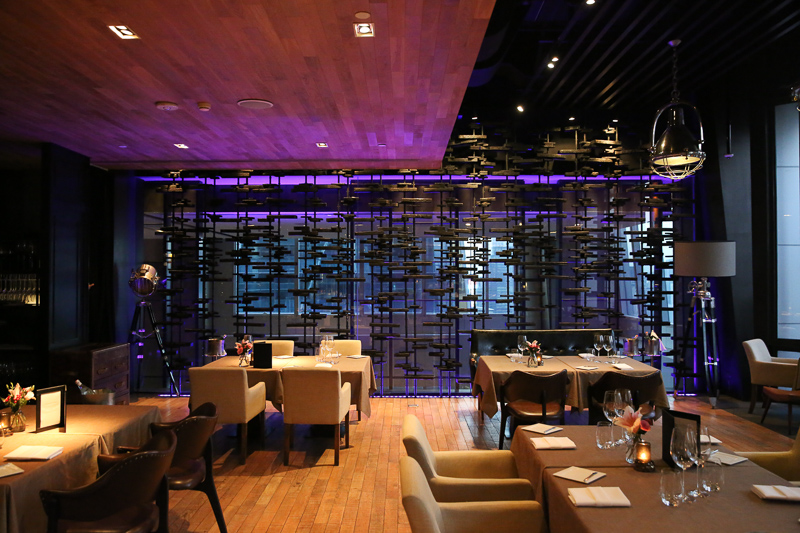
Since July, the French-Japanese modern restaurant has been helmed by Chef Hans Zahner.
Zahner, 34, previously worked in upscale Paris kitchens such as the Chapeau Rouge, Moderne Hotel, and Les Trois Dome in Lyons, and even worked with Kei Kobayashi, of two-star Michelin Kei restaurant in Paris.
Zahner then moved to Shanghai to work at The Peninsula. But ingredient runs to Bangkok to get rice, mango, and pork eventually convinced him to make his next culinary conquest in Bangkok.
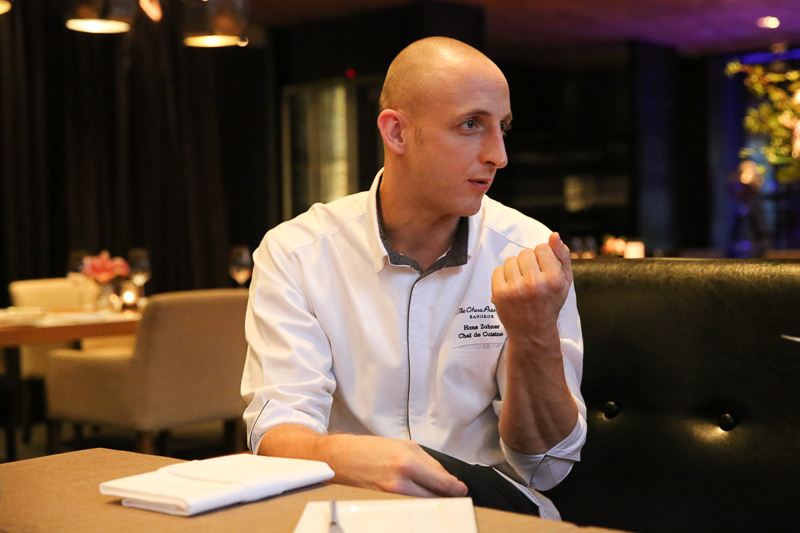
As a chef who’s worked worldwide, he said that French and Asian tongues totally differ in that Europeans will seek heavier, saltier, oilier sauces while Asians generally want lighter, more flavorful, and spicier ones, although he’s noticed that both love seafood.
“Tomatoes and mushrooms from Chiang Mai are the best in Asia, there is everything same as France, like girolle,” he said, using the French word for chanterelle. “The quality of produce in the North of Thailand is not really discovered yet.”
Read: Thai Pride Rides High As Local Chefs Snag Michelin Stars
What’s barring chefs like him from using more local ingredients are logistics of quickly importing them to Bangkok, so much of the menu uses ingredients imported from France and Japan instead.
When asked what his favorite Thai dish is, Zahner said what could be heard as “l’amour” — but he meant “larb moo.”
Elements is open 6:30pm to 10pm from Tuesdays to Saturdays, and is located on the 25th floor of The Okura Prestige, connected to BTS Phloen Chit.

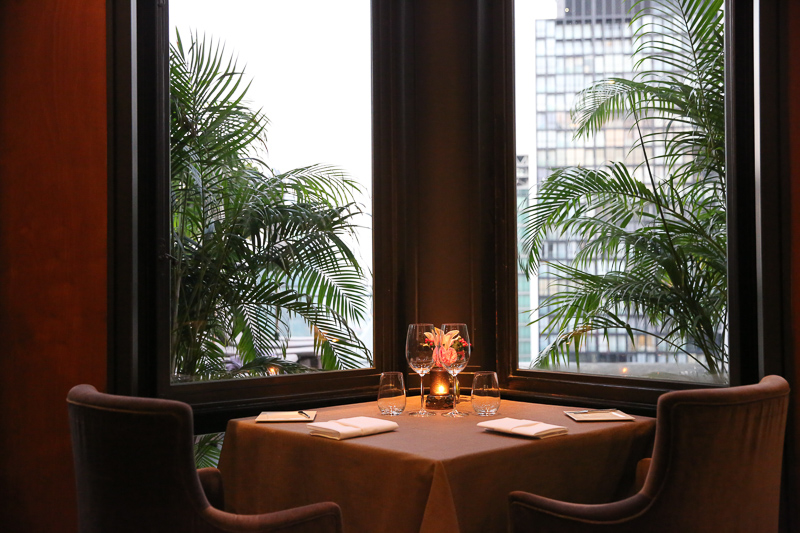
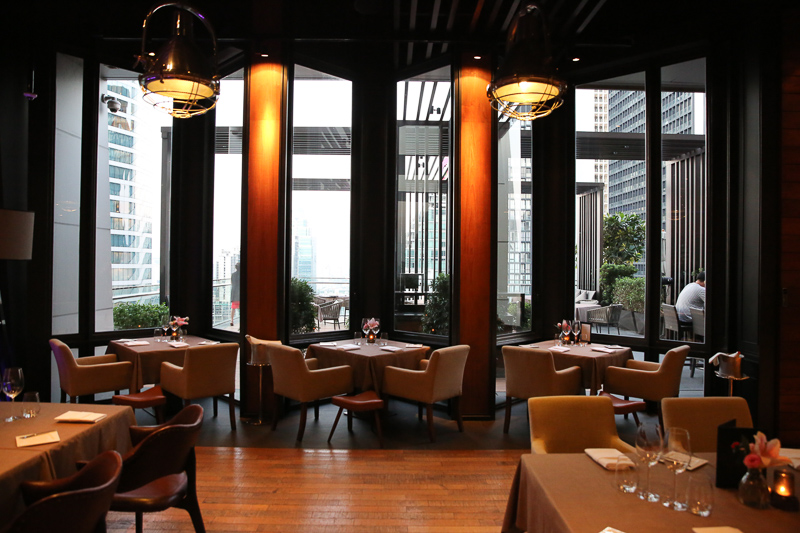
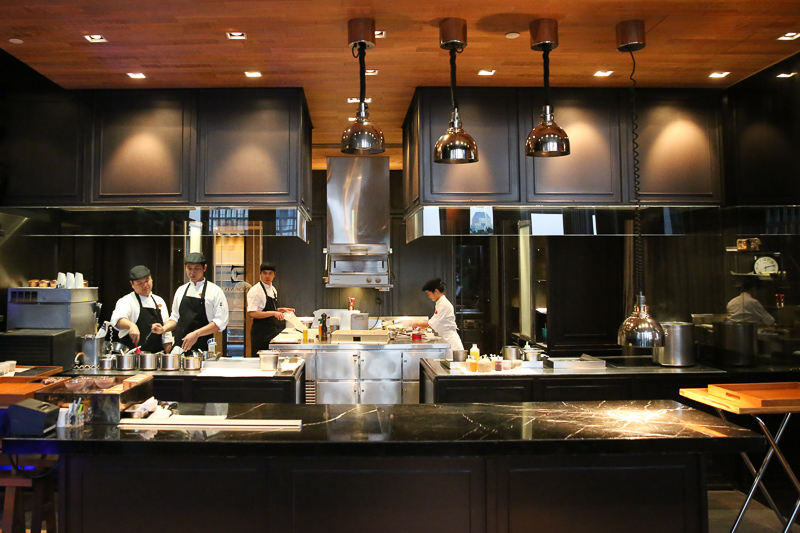
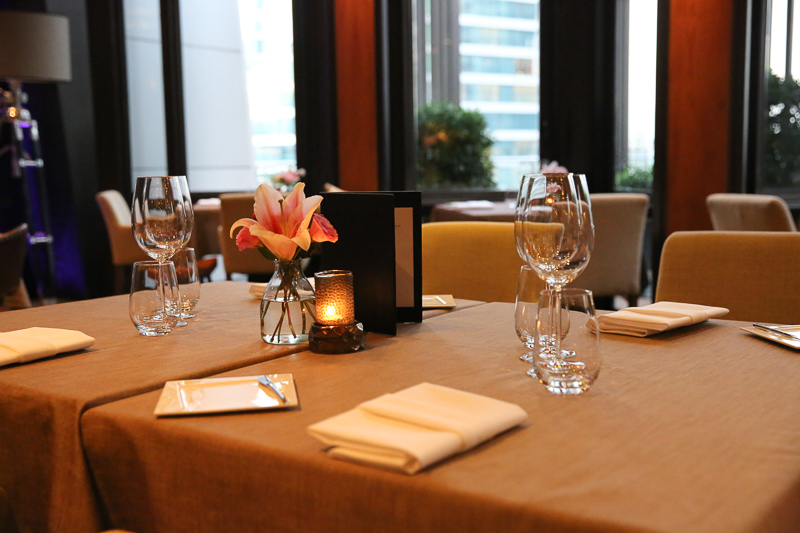
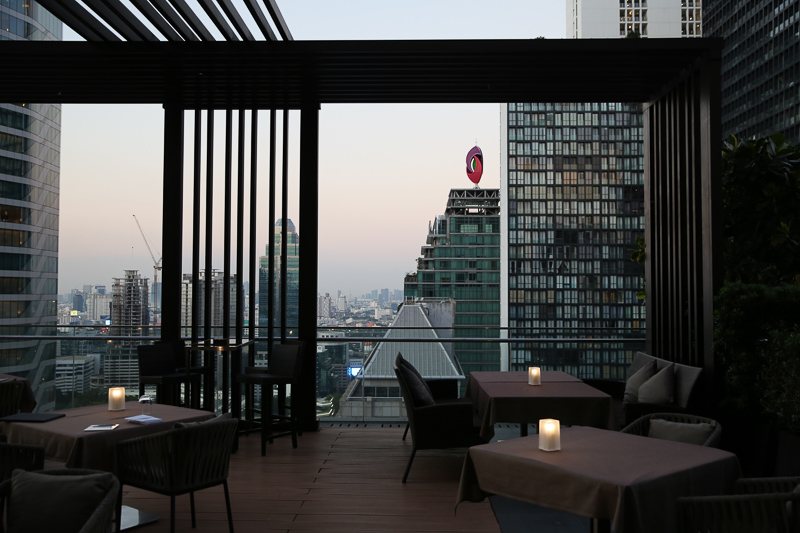
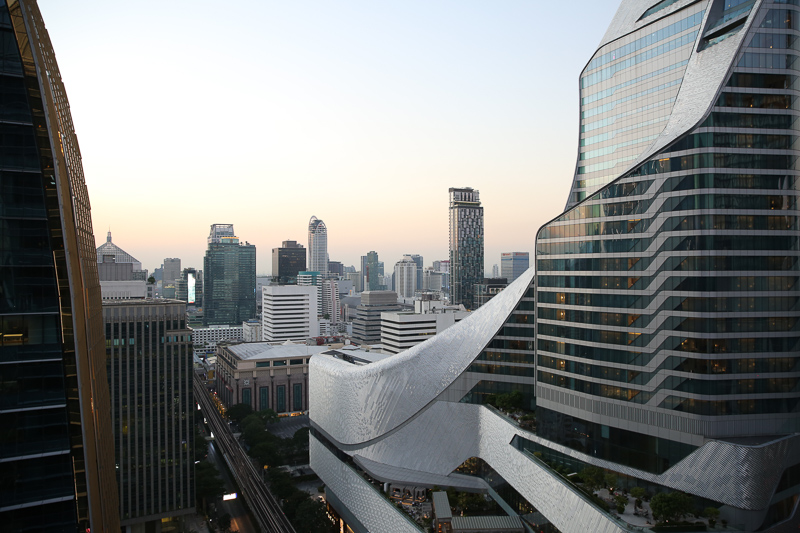
This review is unsponsored and based on a hosted visit.
Photos by Tappanai Boonbandit
Related stories:
Thai Pride Rides High As Local Chefs Snag Michelin Stars
First Thai Restaurants by Thais, in Thailand, Receive Two Michelin Stars
Thai Michelin Stars Break Out of Bangkok
Has Michelin Ruined ‘Modern’ Thai Food? Laureates Weigh In.
Auntie Banyen is Just Delighted With Her Michelin Star
She Was a Maid. Now She Has a Michelin Star.
‘Saawaan’ is Where Good Thai Street Food Goes to Heaven
‘Sra Bua by Kiin Kiin’ Serves Michelin-Starred Thai Food With a Danish Touch


































